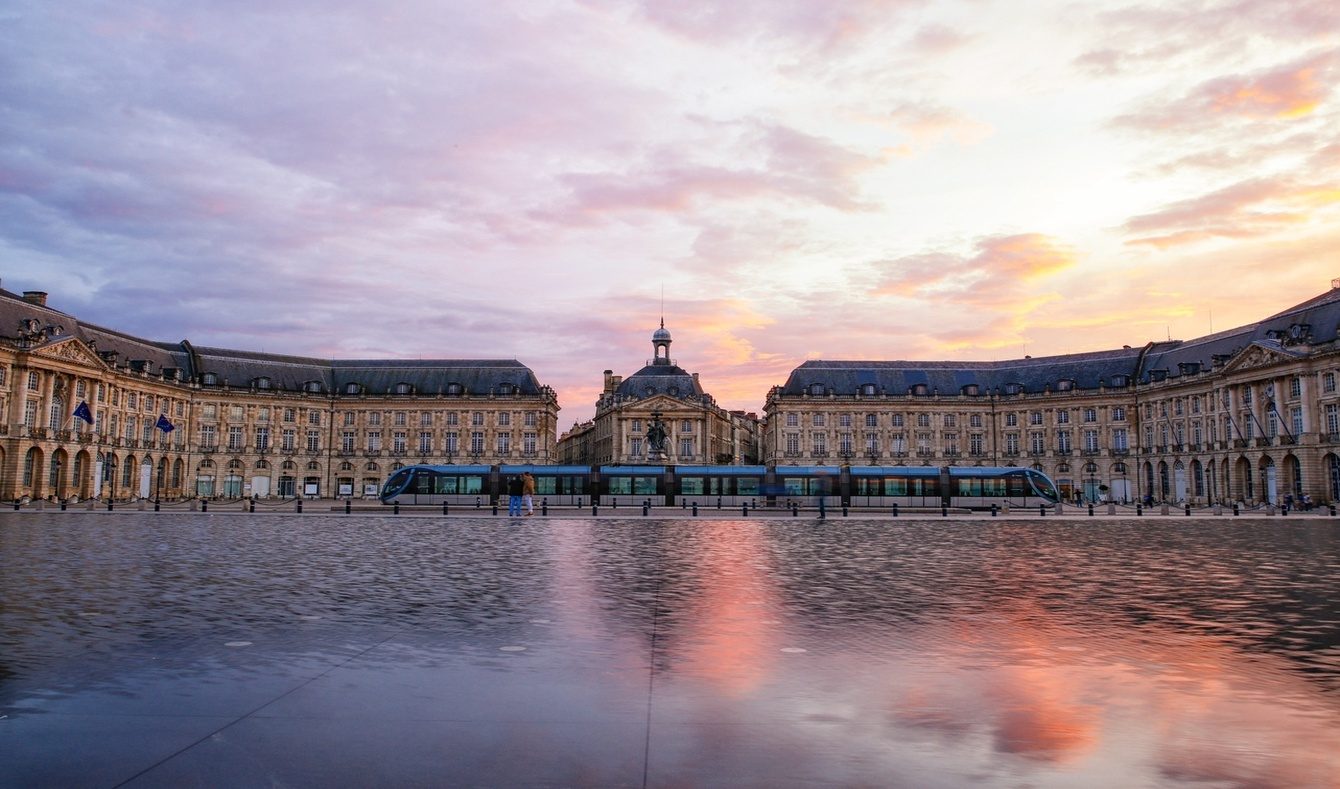Bordeaux was long considered a hidden gem, but not anymore. With its listing as a UNESCO world heritage site and as one of Lonely Planet’s “cities to visit” in 2017, Bordeaux has come into the limelight— and so has its real estate market. Bordeaux, the capital of the Nouvelle-Aquitaine region, has seen a 10% year-on-year increase in its real estate market in 2017 and a 6% increase between January and May of this year alone. Rising prices are nearly on a par with those in big cities like Lyon, averaging €3,300/sq. m in Q4 of 2016, according to French solicitors. Read on to learn why this city is creating so much buzz.
Several urban renewal projects under way
The construction of a high-speed rail connecting Paris to Bordeaux in two hours catalysed a major urban renewal project in the area surrounding the train station. The Bordeaux Euratlantique project was launched in 2010. It aims to create synergy between the development efforts around the Bordeaux Saint-Jean Train Station, which fall within the scope of Euratlantique (a development project classified as an operation of national interest), and those that have nothing to do with Euratlantique, such as the extension of public transport networks and the construction of concert halls. Three million square metres will be built by 2030 as part of the initiative.
The projects undertaken within its framework include the following: Bordeaux Saint-Jean Belcier, a European business hub that will house MECA (the Creative Economy and Cultural Centre of Aquitaine). Given that 7,500 housing units will be going up in the area, public spaces will need to be adapted and various infrastructure projects will be undertaken, including a school complex, a preschool, a community centre and a swimming pool on the Quai de Paludate. On the right bank, across from the Chartrons and Bassins à Flot neighbourhoods, an entirely new eco-neighbourhood will spring up, with 4,950 housing units on roughly 130 acres of land.
The community, to be known as Brazza, represents an innovative concept. It will bring together Accor properties, including a youth hostel, a hotel, restaurants and shared spaces, as well as a 14,000 sq. m sports stadium, among other things. Bottom line: Bordeaux will be completely transformed by 2030.
Bordeaux’s hippest neighbourhoods
“Each has its own charm”, according to Bertille Kholer of Dreaméo, a firm specialising in Bordeaux real estate. “It all depends on what you are looking for.
- If you want a beautiful, spacious, well-heeled vibe, Bordeaux’s Triangle d’Or area is both one of a kind and in demand.
- If you are looking for something hip, with restaurants and small boutiques, Chartrons is the place to be.If you want to rub elbows with young, carefree students, look no further than Victoire.
- If something eco-conscious is more your speed, skip across the bridge to Darwin on the right bank”.
As Bordeaux continues to evolve, each neighbourhood is benefiting from the city’s development. Each has its unique characteristics and all are coveted by many, both in France and abroad.
What is typical in terms of cost per square metre and return on investment ?
In the city’s historic centre, where 99% of the buildings date to the 18th century, the average price per square metre is between €5,000 and €5,500.
Depending on size, a one bedroom goes for between €150,000 and €250,000. For a two bedroom, expect to pay more than €250,000. For a house of roughly 100 sq. m, the price is around €500,000 before factoring in any renovation costs.
In 2016, rental properties in historic Bordeaux generated a gross profit margin of 4.4%.
Buyers’ profile in Bordeaux’s real estate market
While 77% of buyers are from Bordeaux or the broader department, inhabitants of the Paris region are increasingly joining the fray. They now account for 7.5% of buyers, and this percentage should continue to increase; one study showed 8 out of 10 Parisians in middle management are dying to decamp to Bordeaux.
What about French ex pats and non-French citizens ?
Non-French citizens account for less than 5% of historic property buyers in Nouvelle Aquitaine. But that could change, according to Bertille Kohler. Bordeaux’s reputation as an attractive city extends beyond the borders of France.
“UNESCO world heritage, universally lauded wine regions, easy access by train and plane—there is nothing to deter foreign investors, whether they are looking for a secure, stable investment or just a pied à terre around the corner from the public gardens”, says Ms Kohler.
In short, Bordeaux has a strong tailwind and the ranks of buyers snapping up the limited available property continue to swell.
Is it still a good time to buy in Bordeaux ?
According to the General Assembly of FNAIM (the French real estate federation), “there could not be a better time to invest”. So investing in Bordeaux is a great bet, but not just anywhere and not in just any property. The city’s undeniable beauty bodes well for the housing boom’s sustainability, so you should act fast — but not rashly. A real estate transaction should always be conducted prudently. It should always be thoroughly evaluated and analysed to prevent unpleasant surprises down the road.
What kind of building is it? How is co-ownership handled? What is the state of the apartment? What is the quality-to-price ratio? These are all important questions to keep in mind to ensure a successful investment.


